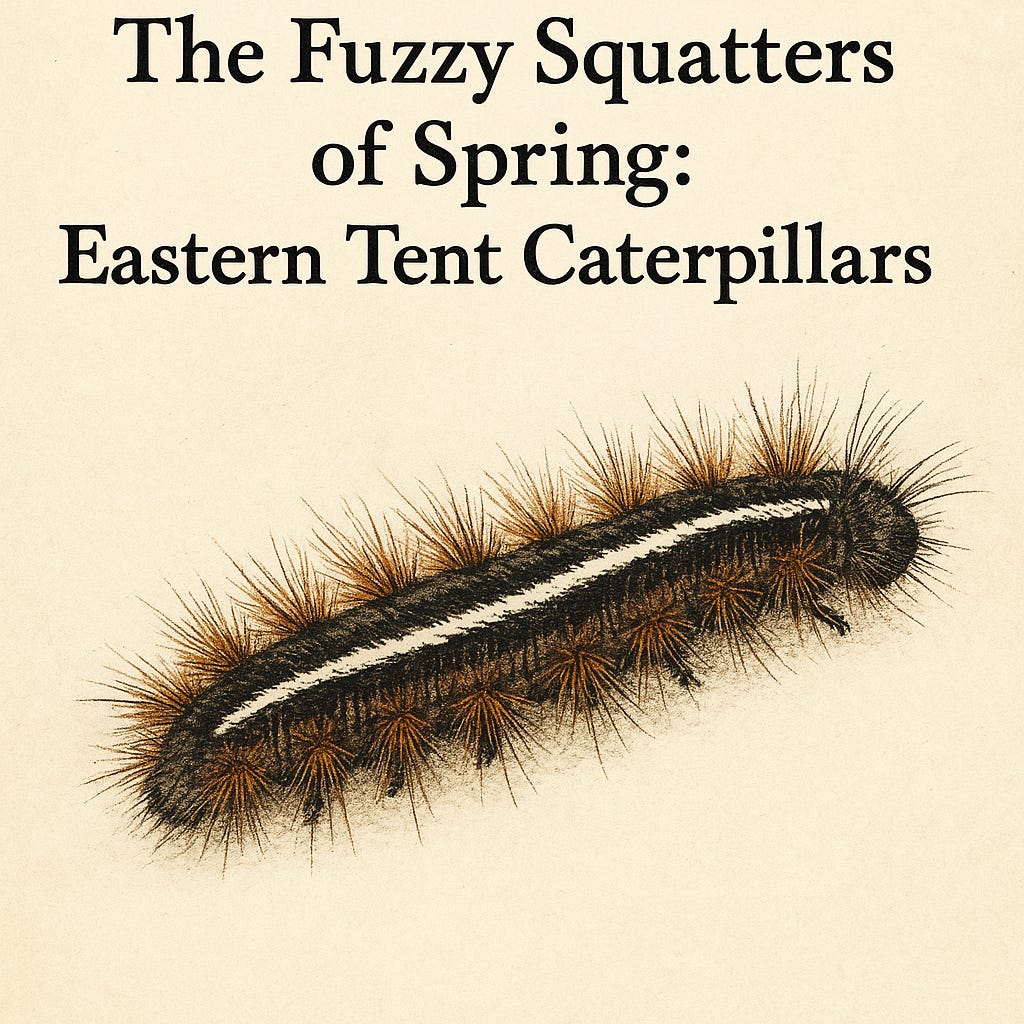The Fuzzy Squatters of Spring
Daily Tech and Science #-1390
Every spring, fuzzy black-and-brown caterpillars start showing up all over the southeastern U.S.—building silky tents in trees, marching across sidewalks, and eating leaves like there’s no tomorrow.
Meet the Eastern Tent Caterpillar (Malacosoma americanum), one of nature’s most organized (and slightly gross) springtime creatures. Here are some wild facts about them:
🌞 They're Solar Powered
Tent caterpillars build their silk tents on the sunny side of tree branches to soak up the sun’s heat. They even move between different layers of the tent to stay at just the right temperature for digestion. It's like a built-in heating system!
🍒 They’re Cherry Tree Fanatics
Their favorite hangout? Wild black cherry trees. They’re super picky and can sniff out the perfect leaves based on chemical signals.
🧪 They Vomit When Threatened
Yes, really. When attacked, they can puke up a foul-smelling green liquid that repels ants, wasps, and other predators. Gross—but effective.
🐛 They Follow Invisible Trails
These caterpillars lay down scent trails to guide their colony to good food. Scientists study them to understand group decision-making and even use their behavior in computer algorithms.
🐦 They Fuel a Food Frenzy
After they pupate in early summer, they become moths that don’t eat—but birds and bats sure eat them. These moths kick off a seasonal feast for baby birds just learning to fly.
🧬 Their Eggs Wait All Winter
In summer, females lay shiny brown egg masses on tree twigs. Those eggs survive the whole winter, ready to hatch together in early spring for a perfectly timed emergence.
So next time you spot a tent in the trees or a fuzzy caterpillar crossing the sidewalk, give it a little nod of respect. Nature's spring engineers are hard at work.


